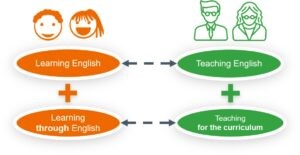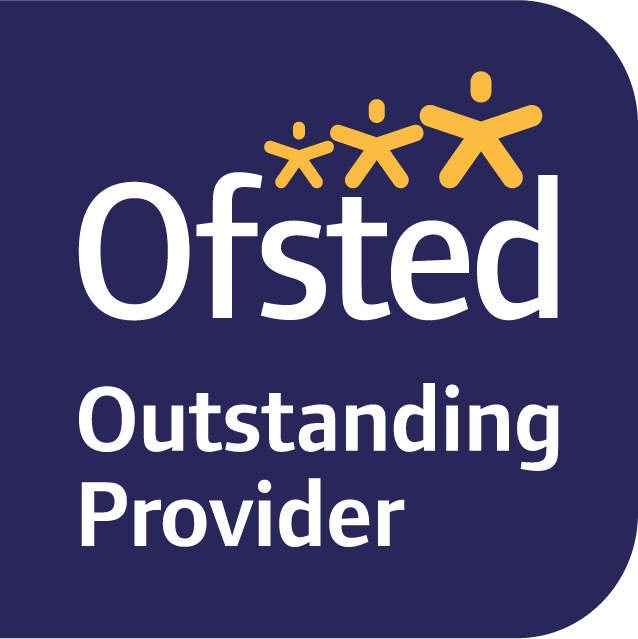Inclusion

St. Dunstan’s Primary School is committed to providing an appropriate and high quality education to all of the children in our care. We believe that all children, including those identified as having additional educational needs, those with English as an Additional Language and from all socio-economic backgrounds should receive a broad and balanced academic and social curriculum, which is accessible to them, and that every child should be fully included in all aspects of school life.
All children should be equally valued in school. We will strive to eliminate prejudice and discrimination, and to develop an environment where all children can flourish and feel safe. We aim to develop cultures, policies and practices that include all learners. Our aim for our approach to engender a sense of community and belonging, and will offer new opportunities to learners who may have experienced previous difficulties.
We believe that educational inclusion is about equal opportunities for all learners, whatever their age, gender, ethnicity, impairment, attainment and background. This may mean that we need to put in place resources or support to ensure access to the opportunities is equal.
We pay particular attention to the provision for and the achievement of different groups of learners:
-
learners of all ages
-
minority ethnic and faith groups, Travellers, asylum seekers and refugees
-
learners who need support to learn English as an additional language (EAL)
-
learners with special educational needs
-
learners who are disabled
-
those who are looked after by the local authority
-
others such as those with long term medical needs
-
those who are young carers
-
those who are in families under stress
-
any learners who are at risk of disaffection and exclusion
Our aim is to remove any barriers to learning, which are prohibiting any child from achieving their potential. Pupil performance and well-being go hand in hand. Children cannot learn if they don’t feel safe or if health problems are allowed to create barriers. We want every child to fulfil their potential, regardless of their background or circumstances.
The Leader of Inclusion, a member of the Senior Leadership team, oversees the progress and additional support of all of the learners described above. They support and liaise with the class teachers about the children’s needs, meet with parents, seek advice from outside agencies and keep the Senior Leadership Team and Governors informed about the needs of the children at the school.
Disability
As a school, it is our duty to provide an inclusive environment for disabled pupils under the Equality Act of 2010.
The Equality Act’s definition of a disability is:
"You’re disabled if you have a physical or mental impairment that has a ‘substantial’ and ‘long-term’ negative effect on your ability to do normal daily activities.”
What ‘substantial’ and ‘long-term’ means
‘substantial’ is more than minor or trivial - e.g. it takes much longer than it usually would to complete a daily task like getting dressed
‘long-term’ means 12 months or more - e.g. a breathing condition that develops as a result of a lung infection
For further information on the Equality Act 2010 click on the link below:
Access to the Environment
St Dunstan’s Catholic Primary School is a single site school.
The school area is built on two levels.
We have made sure that there are good lighting and safety arrangements (for example, markings on steps) for all visually impaired pupils. Our classrooms provide good acoustic conditions so that the effects of hearing difficulties are minimised (part-carpeting, quiet areas).
Children requiring equipment due to an impairment will be assessed in order to gain the support that they require.
Details of our plans and targets on improving environmental access are contained in our Accessibility Plan.
We also have a duty to make ‘reasonable adjustments’ to make sure disabled students are not discriminated against. These changes could include:
-
changes to physical features - for example, creating a ramp so that students can enter a classroom
-
providing extra support and aids (such as specialist teachers or equipment)
-
moving the floor a classroom is on to meet the physical needs of a pupil.
Incorporating disability into the Curriculum
The RSHE curriculum includes issues of disability, difference and valuing diversity. Additional advice will be sought from organisations on appropriate resources as needed e.g. The National Autistic Society.
Disabled adults are invited to work with the children, as we believe it is important to have role models, and we encourage Disabled People to join our governing body.
The library resources are regularly reviewed to ensure they include books that reflect a range of special educational needs and come from a disability equality perspective. The Inclusion Leader regularly updates and orders books with positive images and a positive portrayal of Disabled People as they become available. Class libraries have also been updated to ensure that the children have access to books that reflect our school community and the wider world.
Terminology, imagery and disability equality
The school is aware of the impact of language on children within the school. We work with the children to understand the impact of the words they use, and deal seriously with derogatory name-calling related to special educational needs or disability under our Anti-Bullying Policy.
We also try to make sure we have positive images of disabled children and adults in displays, resources etc.
We aim to make optimum use of RSHE lessons for raising issues of language and other disability equality issues.
EAL (English as an Additional Language) learners
Learners with EAL have a dual task at school: to learn English (language) and to learn through English. For this reason, EAL teaching aims to teach English using the mainstream curriculum as the context. These relationships can be seen in the graphic. At St. Dunstan’s when planning our curriculum and sequences of lessons we consider the needs of our EAL pupils and employ specific teaching strategies and resources to make the language of the curriculum accessible to learners who use EAL.

We believe that bilingualism and multilingualism are such an asset and encourage families to use their mother tongues as their main language! The ability to use more than one language is a valuable skill that learners who use EAL bring with them, regardless of whether they are New to English or not. Learners actively use the languages they already know to help them to learn English.
Effective practice for learners using EAL is likely to include:
Activating prior learning: activities that enable learners to activate their prior knowledge of the topic of the lesson facilitate greater understanding and engagement. Example strategies include taking advantage of the learner’s first language and finding out what the learner knows through questioning.
Providing a rich context: EAL learners will benefit from being provided with additional contextual support to help them make sense of the information conveyed to them in English. The use of images and graphic organisers (e.g. diagrams, grids, charts, timelines) are very useful for this purpose.
Making the English language explicit in the classroom: within the context of the curriculum, learners with EAL can be encouraged to notice the language used and understand how it is used. This implies pointing out key forms and structures that allow pupils to meet the language demands of the tasks. Strategies include providing oral and written models and scaffolding speaking and writing through speaking and writing frames.
Developing learners’ independence: the independence of learners who use EAL can be fostered by developing their organisational, thinking and social skills (for instance, working co-operatively with others, taking turns and asking for help). In terms of organisational and thinking skills, teachers can provide learners with opportunities to model and extend what has been taught and support them in developing note taking and summary-writing skills. Social and cultural norms in the classroom will need to be made explicit to the learners. Pupils might be used to different rules and codes of behaviour in school in other countries; for instance, in Japan it is inappropriate to look a teacher in the eye whilst many teachers will expect it in an English school. Teachers can convey information about school social skills by translating simple lists or presenting them pictorially for the learners.
Supporting learners with EAL to extend their vocabulary: EAL learners at all levels need to be given opportunities to grow their English vocabulary range. This could be done by taking advantage of their first language(s) through translation, the use of flashcards and images. It is important to remember to develop the learner’s academic language skills, for instance by focusing on the differences between formal and informal vocabulary.
‘Be who God meant you to be and you will set the world on fire.’
St. Catherine of Siena


